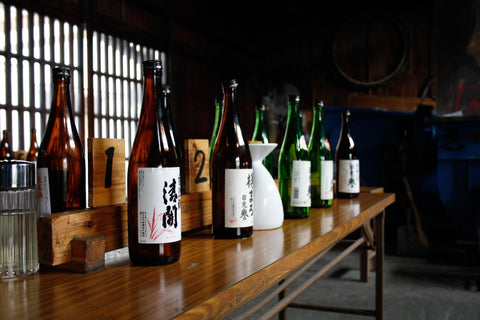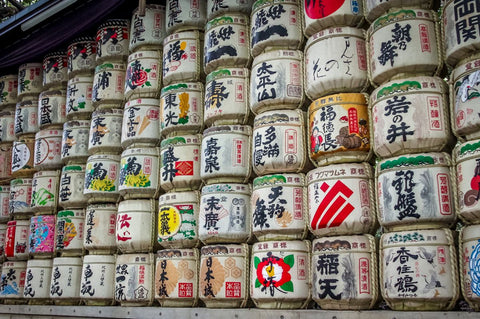How do you store sake?
- Follow recommended storage temperature
- Avoid sunlight, heat, and strong smells
- Put it in the fridge after opening
- Keep bottles upright
- Take note of “expiration dates”
Sake has a relatively stable shelf life, but certain factors can cause it to lose its great fragrances and flavors earlier than intended. This is where proper storage and care comes in.
Learning how to store sake is an important part of enjoying this drink at its best. Read on to see what to do before and after opening, and how to ensure each bottle remains delicious and keeps its potency!
Proper storage is key to enjoying sake at its finest, especially with the upcoming Sake Manila 2025 event just around the corner. From maintaining the ideal temperature to keeping bottles upright, the right storage techniques can preserve the rich aromas and delicate flavors of your sake.
Follow recommended storage temperature
First, know that storage temperature is very different from serving temperature. Sake that was stored chilled can be served at room temperature, and vice versa.
Before opening, most sake needs to be kept at room temperature in a dark place. More complicated sake, such as namasake, ginjo, and daiginjo require other storage conditions.
For namasake bottles, put them in the fridge as soon as possible. This sake is unpasteurized, which means it still contains yeast. Cold storage is needed to keep the yeast alive and preserve its fresh and dynamic flavor.
For ginjo and daiginjo sake, it’s best to keep them in the fridge too. Although these kinds of sake are already pasteurized and will remain stable at room temperature, they still need the cold. This is because it has delicate aromas and flavors, which can be influenced by the temperature. When exposed to heat — however marginal — you can lose out on its fragrant aroma and fruity flavors. Overall, it’s safer to keep these sakes in the fridge to preserve their character.
Avoid sunlight, heat, and strong smells

We strongly recommend keeping any sake away from any sources of UV light. The reason for this is that sake has no preservatives and is therefore easily influenced by outside factors like light. This is the reason why most sake is packaged in dark green or brown bottles — it’s a way of protecting it from too much light. While exposure to UV light won’t immediately render your sake flavorless and spiritless, you should avoid it as much as possible.
If you’re keeping your sake outside of the fridge, then we recommend avoiding heated spaces, or areas that have fluctuating temperatures. This includes spaces near heating units or ducts, or cabinets near a fridge where the compressors continually pump out heat. Like UV light, heat and fluctuating temperatures can make sake gradually lose its character.
If you’re keeping it in the fridge, avoid placing your sake near anything with strong smells. This can seep into the bottle and affect the delicate fragrances of the sake.
If your sake comes in a box, we suggest keeping it in it. It provides an extra layer of protection from heat, smell, and UV light!
Put it in the fridge after opening
Making sake is a very tedious, laborious process — breweries go to great lengths to create their brands’ specific flavors. However, the moment you open a bottle, it becomes an ongoing fight against oxidation. The more oxidized your sake is, the farther away from its intended taste it becomes.
So, it’s important to try and prevent that as much as possible. To do this, make sure you always keep your sake in the fridge right after opening it. Do this for any sake, even if you’ve previously kept it at room temperature before opening.
The cooler the temperature is, the slower the rate of oxidation. This way, you can minimize the effects of oxidation.
Keep bottles upright

Remember, sake isn’t wine. You don’t have to keep their bottles on their sides to keep the cork wet.
Sake can be kept upright — in fact, purists highly suggest doing so. This prevents the sake from touching the bottom of the cap for a long time. This, in turn, helps avoid the flavors and smells of the sake from being influenced or changed by the cap.
Take note of “expiration dates”
If you’ve looked at your sake bottle, you might have noticed there is a production date — but no expiration date. This is because sake has a comparatively high alcohol content compared to other drinks. As a result, it has a stable shelf life, and given the right conditions, it does not rapidly deteriorate.
Keep in mind that even if there’s no expiration date on your bottle, there is a “best by” date. Ideally, you should finish drinking your sake the same day it’s opened to get the most out of its unique flavors and fragrances. However, if you can’t do so, then its best-by date is within one week of opening.
In the case of namasake, which is unpasteurized, this time frame becomes even smaller. This sake should be consumed within a few days of opening because of its delicate characteristics.
That said, we recommend enjoying your sake as soon as you open it! This is when it’s at its optimum condition. So, if you’re celebrating or are having a particularly nice dinner, it’s the perfect time to break out your sake and drink up!
Key Takeaway
Sake, though stable, can be a bit finicky about how it’s stored. If you’re unsure of how to take care of your bottle, then just follow our quick guide on how to store sake. With this, your bottles stand a better chance of preserving its unique taste and freshness for as long as possible!
Author's Note: This entry was optimized by the best SEO Services Agency in the Philippines - SEO Hacker



